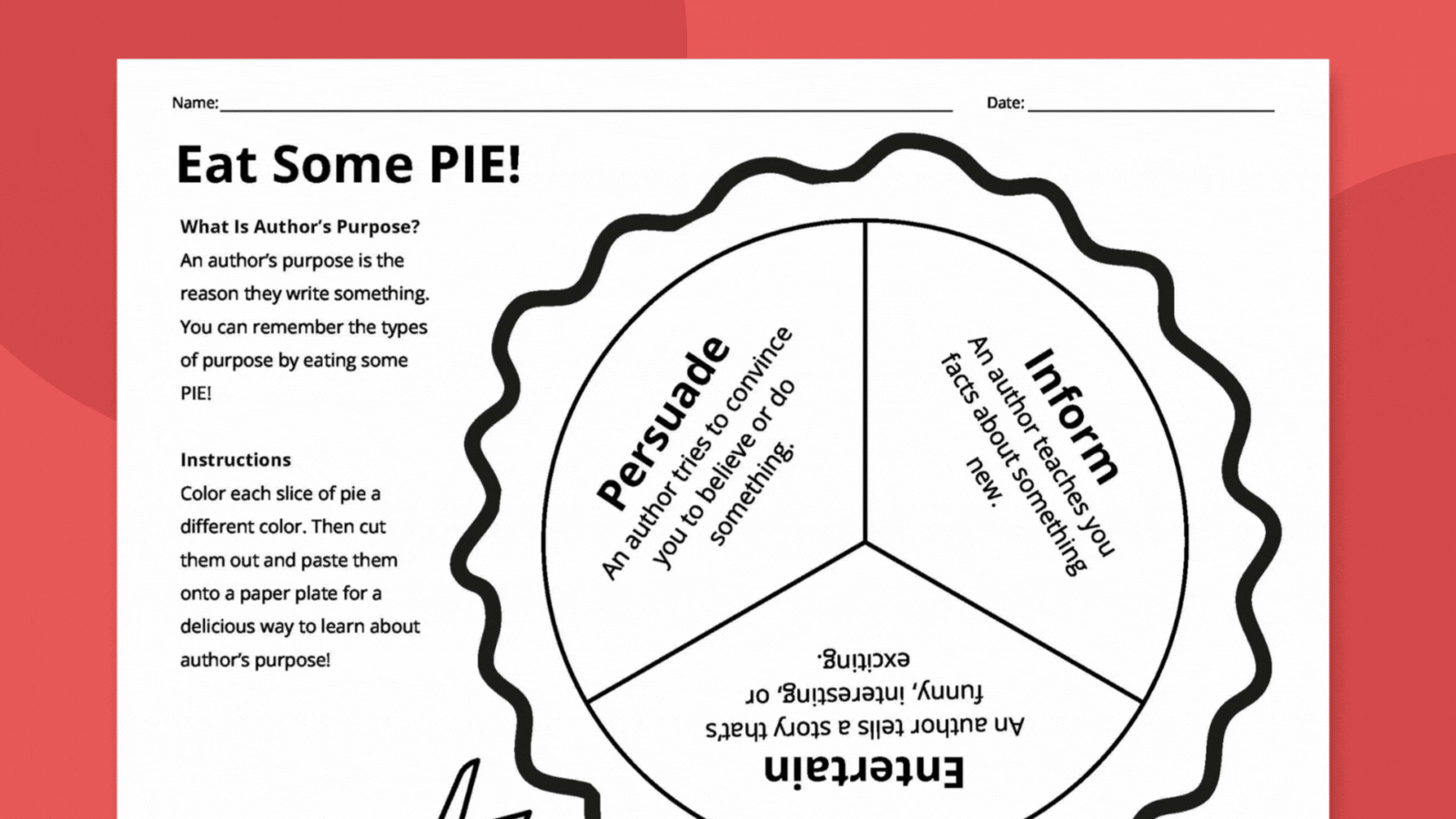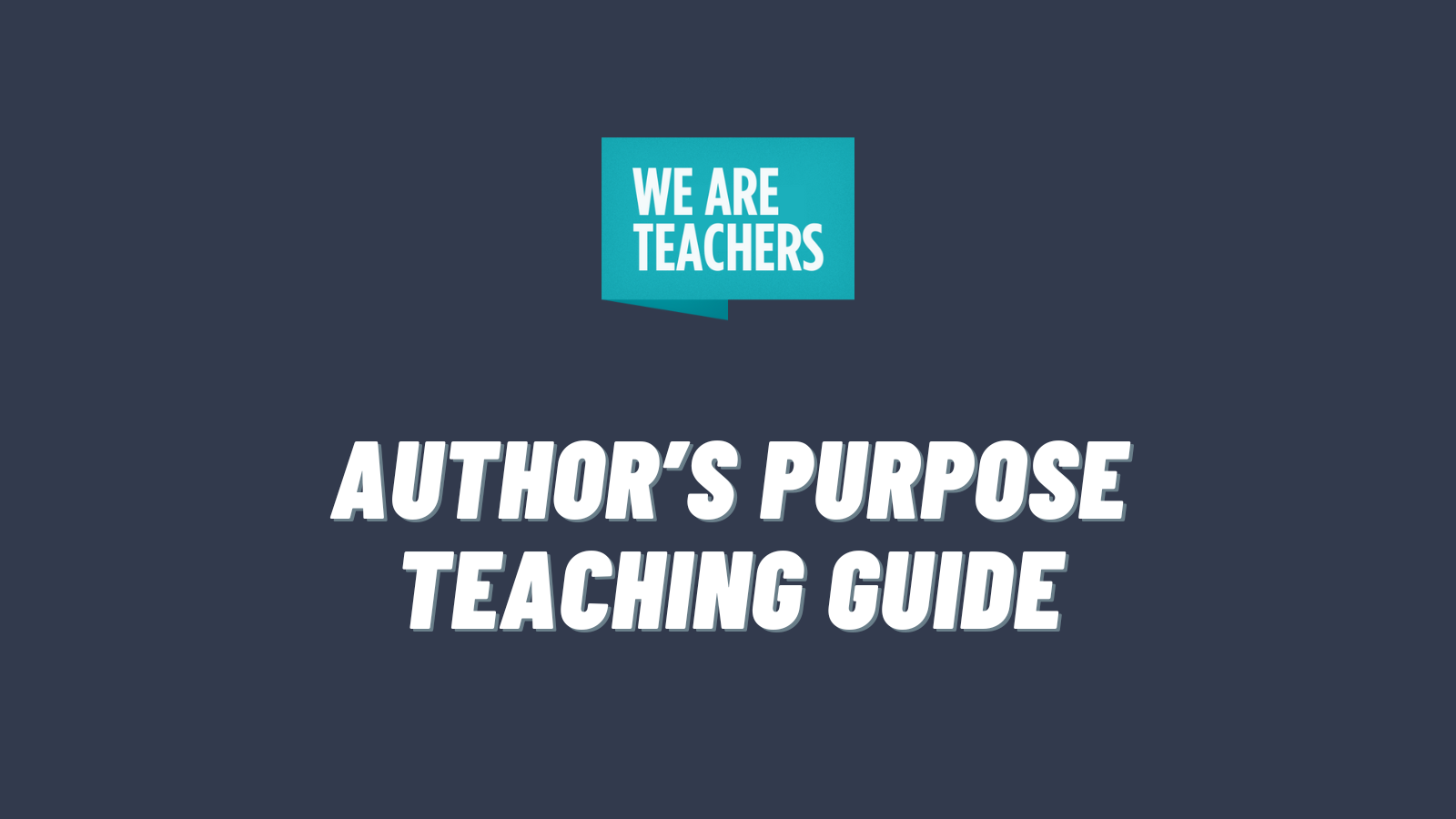As we teach students to think critically about texts, one of the concepts we cover is author’s purpose. Here’s what that term means and ideas for teaching it. (Be sure to grab our free printable bundle of author’s purpose activities too! Find it here.)
What is author’s purpose?
Author’s purpose is the term we use to describe why an author writes a particular piece. There are many reasons an author may write, of course, but we usually sum them up under a few major categories: persuade, inform, entertain, explain, and describe.
Recognizing the author’s purpose allows us to look at their writing more critically, analyzing its tone, content, and style. For instance, if we know an author is writing specifically to persuade us to their point of view on a topic, we can evaluate their statements with a more skeptical eye, looking for provable facts and potential bias. On the other hand, if an author is writing to entertain, we as readers don’t need to worry too much about whether they’re getting all the facts right or what they want us to believe about a particular topic.
Author’s purpose is a nuanced concept, as writers frequently have more than one purpose when writing. A fiction writer may want to entertain their audience but also inform them about a subject or persuade them to consider new points of view. As readers, we should consider all potential purposes to truly understand the text as we read.
Check out this video with a great explanation of author’s purpose from one of our teacher contributors:
Author’s Purpose Types and Examples
When we talk about author’s purpose, we use a few categories most frequently. Over the years, the initial three categories of “persuade, inform, and entertain” have been expanded to include “explain” and “describe.” Here’s a general definition of each, along with some examples.
Persuade
When writing to persuade a reader, an author attempts to convince a reader to adopt a particular point of view. They may do this with facts and data, persuasive language, or a combination of both. When you read persuasive writing, you should always do so with a critical eye, looking for bias and misinterpretation of information. (Learn more about critical thinking skills here.) Examples include:
Inform
As the name implies, this type of writing provides information to an audience, usually with a neutral tone. The author wants to educate the reader on a topic, presenting facts, evidence, and examples in a straightforward manner. (The article you’re reading right now is an example of informative writing!) When reading an informative piece, readers should remember to consider the reliability of the sources when determining the quality of the information. Examples of informative pieces include:
Entertain
When we think of authors who set out to entertain, fiction writing usually springs to mind. But nonfiction can also be entertaining, so don’t immediately rule out this purpose when you encounter a piece of nonfiction. This is especially true for humorous writing, travel writing, documentaries, entertainment and sports news, and even nonfiction books.
On the other hand, while some fiction writing is meant as pure entertainment, fiction writers can also have other purposes in mind. That’s one reason why we evaluate so many fiction texts more deeply: to understand what the author is really trying to say. Common entertainment writing examples include:
Explain
This is similar to “inform,” but it usually means a deeper dive into a topic. For instance, an informative text might tell you about the most popular foods in Greece, while an author whose purpose is to explain will actually give you the recipes and walk you through how to make those dishes. An informative encyclopedia article will give you an overview of the War of the Roses, while a textbook or nonfiction book on the subject will explain much more about the events and people involved. Examples include:
Describe
Descriptive writing helps the reader visualize the subject of the text. Authors give specifics like measurements and colors, along with expressive language that describes sensory experiences like sounds, smells, and tastes. The author’s purpose is to bring a subject to life for the audience with lots of vivid details. Examples include:
Plus, check out our free author’s purpose worksheet bundle.

Get our free worksheet bundle including three different author’s purpose activities.

